Historical curbs
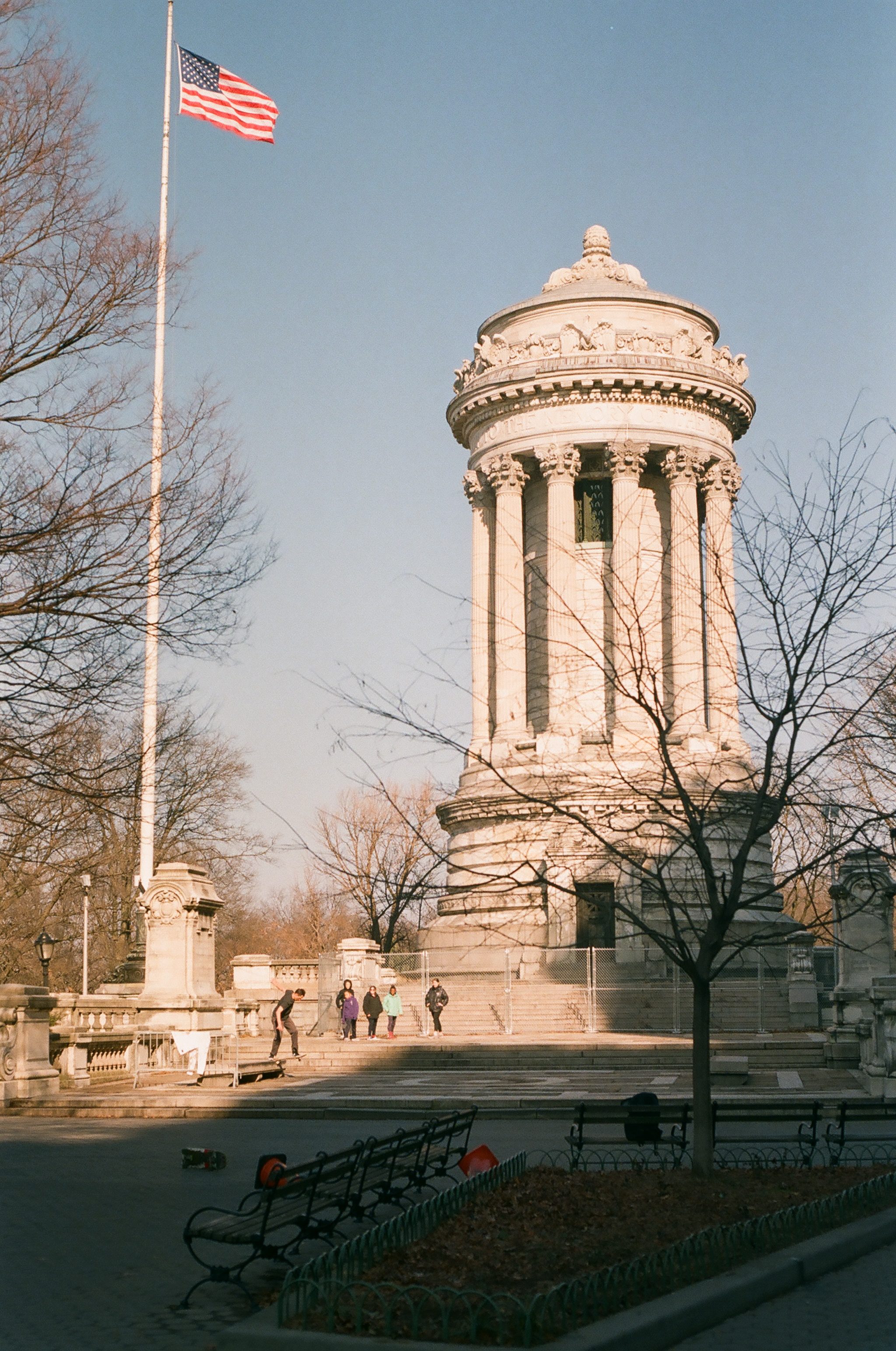
I moved to New York from New Zealand with my family in late October, 2019. The adjustment has been all the things you’d imagine – exciting and hilarious, frustrating and expensive, and… a bit boring. It turns out life can be boring anywhere. But in between apartment viewings, school interviews and four separate IKEA missions, I’ve managed to fit in a fair bit of skateboarding.
Through keeping up with the zeitgeist (and my 43-year-old knee), I skate a lot of curbs. I’ve noticed that the best curbs I’ve found in New York are attached to historical monuments and cultural sites. They are located in plazas or parks and are rarely a bust, even though it feels like they should be. To help me get my bearings on my new home, I did some research and visited a few of these grindable landmarks.
I’ve been trying to write this thing for a while now, but things keep getting in the way. First it was winter, then it was a torn ligament in my thumb, and now we’re at the centre of a global pandemic. Maybe it’s a completely irrelevant topic at this point, but if, like me, the current highlight of your week is sneaking out to practice slappies for 20 minutes at a safe distance, maybe it is still sort of interesting.
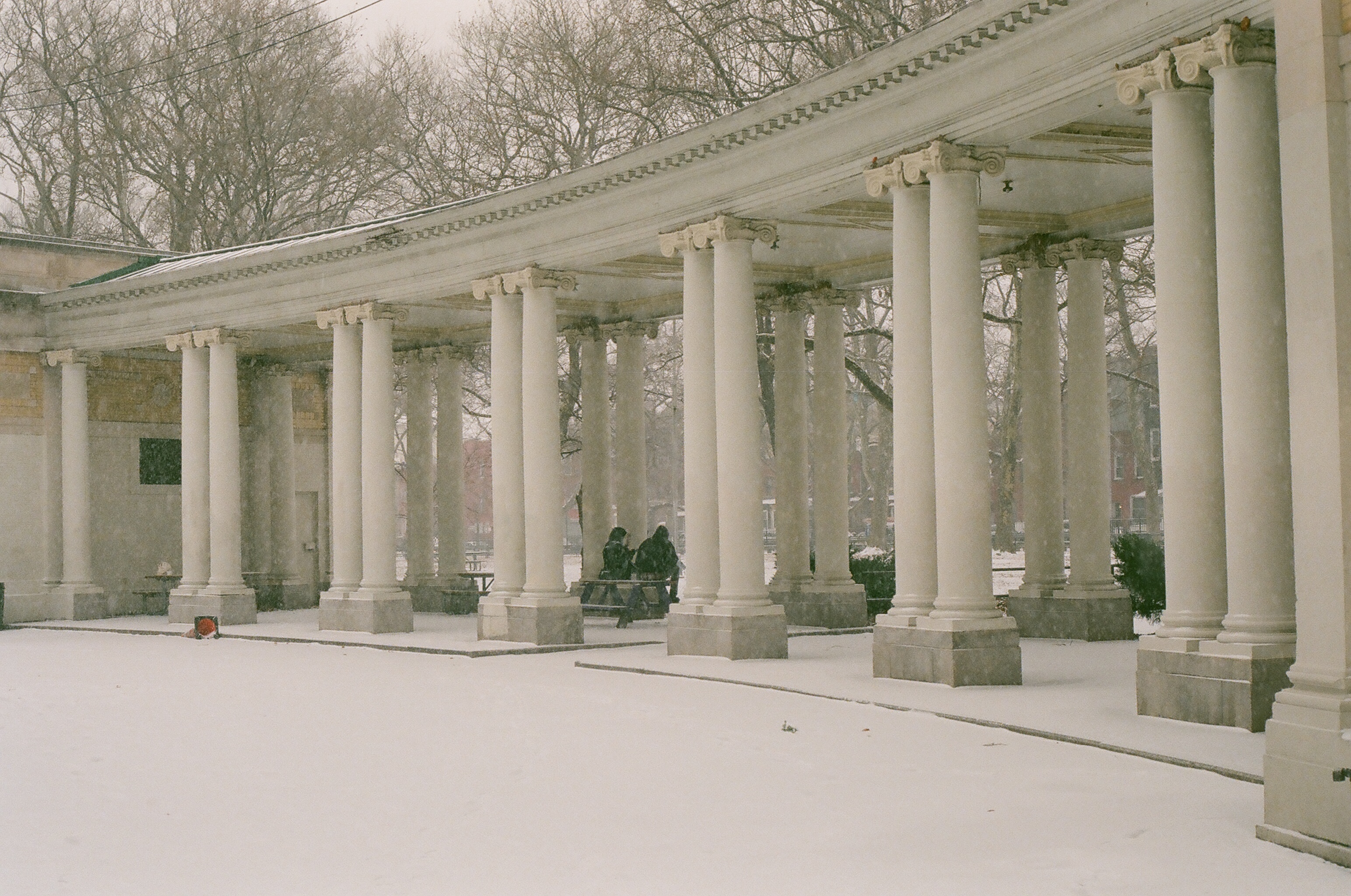
McGolrick Park
Originally opened as Winthrop Park in 1891 (named after the parks commissioner’s son), McGolrick Park changed to its present title in 1941 as a dedication to a popular local pastor named Monsignor Edward J. McGolrick. According to the NYC Parks Department website, ‘Msgr. McGolrick Park offers Greenpoint residents a quieter and more relaxed experience than its busy neighbor, McCarren Park.’
At the centre of the park, the Shelter Pavilion is a beautiful columned structure that is home to a couple of small, bevel-edged granite curbs, a manual pad and a ledge. I’m not sure if I would skate at McGolrick that often if I didn’t live just down the street; the ground is uneven and weathered, and there’s really not much to do there. But since I skate there nearly every day, I’ve grown accustomed to its quirks; the roughness doesn’t bother me anymore and I’ve sorted out a way of skating both curbs in a line while avoiding the puddles and cracked tiles.
Today, I skate McGolrick for the twenty seven minutes it takes for my clothes to run through their cycle at the laundromat. It is frosty and it takes me a few laps to loosen up enough to even attempt a slappie, but when I do, it works. I circle back and forth, going backside and frontside, and I feel myself slowly improving. A woman stops to let her baby watch me for a while. I say what’s up to the park guy and he grudgingly nods. It isn’t a spectacular session and it isn’t an amazing spot, but it feels like the curb I deserve.
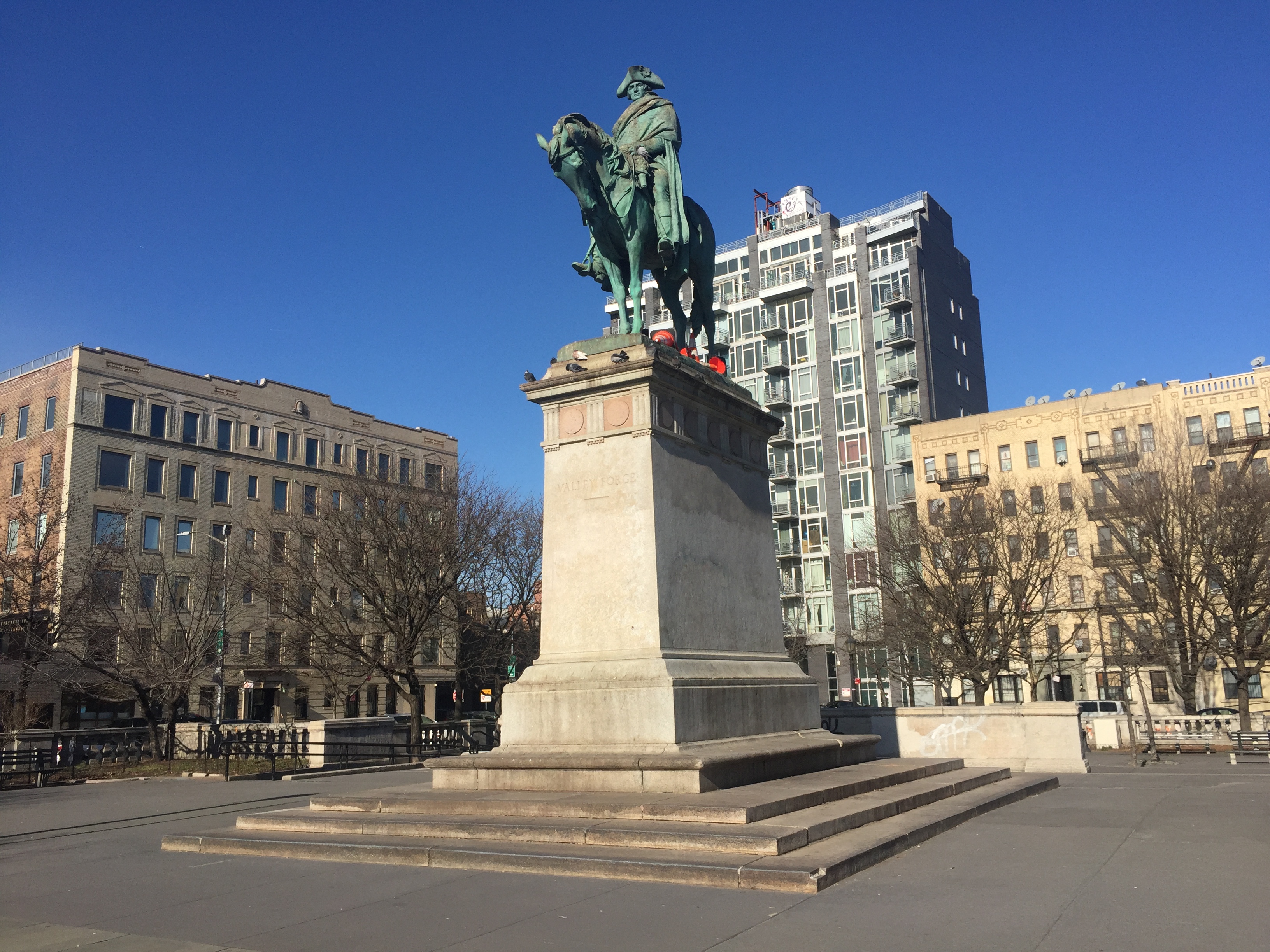
Williamsburg monument
My next port of call is the Williamsburg monument spot – the one Taylor Nawrocki based an entire part [https://youtu.be/Ryswou46hEM] around, the one Tom Knox casually fucks up [https://youtu.be/yt3JC6Ng_qQ?t=129] whenever he visits. I am in Williamsburg for an appointment at the Apple store to have my iPhone examined, because it stops working whenever I leave the house. After my allocated ‘genius’ informs me that I need to buy a new iPhone, I get some tacos and make my way to the spot.
For some reason, every time I come here I feel really sore and negative. It’s a great spot with loads of possibilities, or it appears to be in videos, until I get there and am confronted with my own mediocrity. “Why do I keep doing this to myself?” I wonder, as I push around trying to feel comfortable. My wheels catch in a crack between the pavers; I catch a load of bird shit on my pushing foot and it sprays across my griptape.
The statue watching over all this is the bronze likeness of George Washington sitting on a horse, looking a bit cold and bummed. Entitled Washington at Valley Forge, it catches America’s first President in a moment of contemplation at a desolate spot about 20 miles northwest of the then-British Army occupied city of Philadelphia, where he and around 12,000 soldiers camped out for the entire winter of 1777 while they figured out what to do next. Of course they emerged victorious, but around 2,000 troops starved or froze to death that winter. As I finger my cold, dead phone, I feel a real affinity with George. Life can be rough.
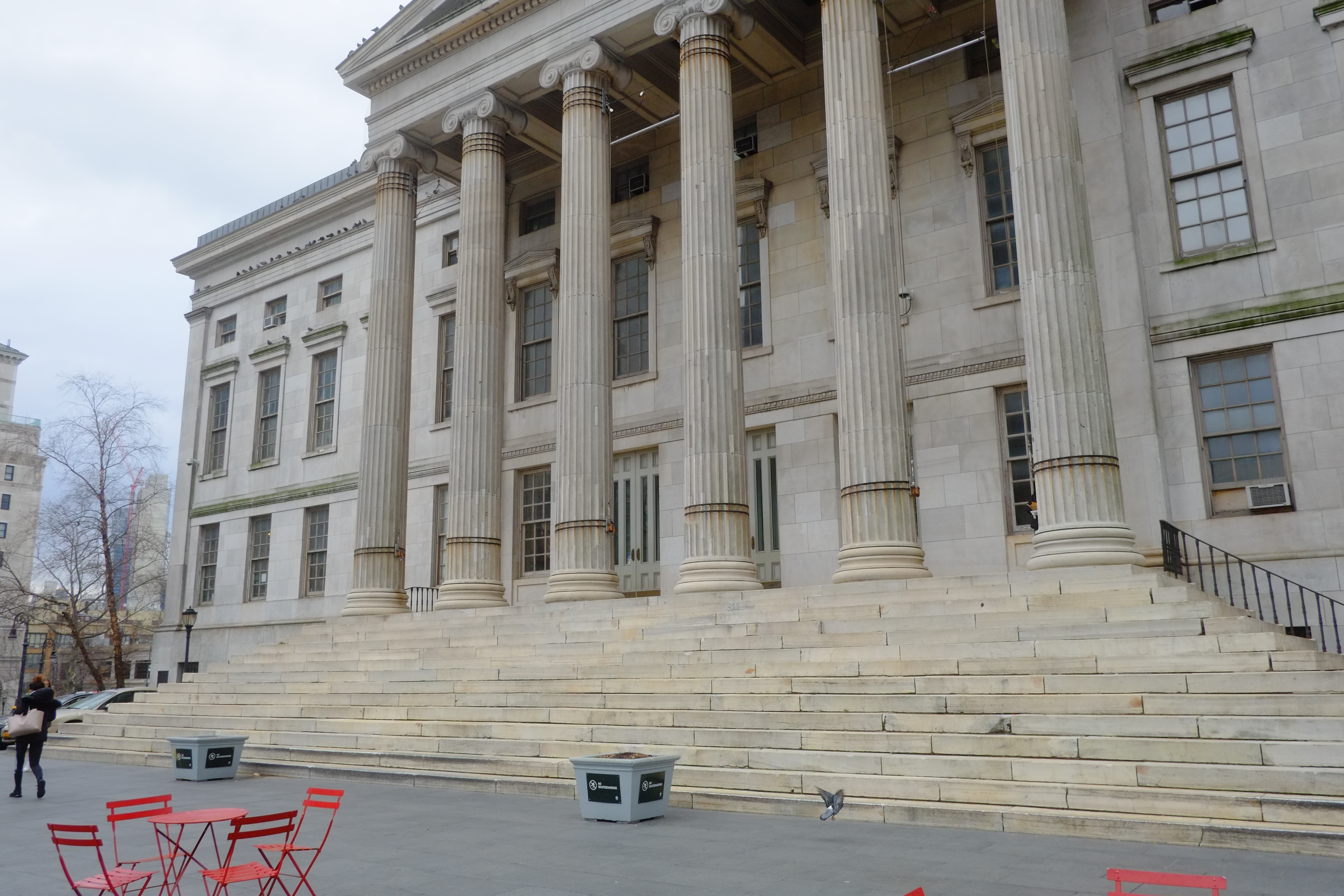
Borough Hall, Brooklyn
Completed in 1848, Borough Hall is Brooklyn’s oldest public building. It was built as City Hall for the former City of Brooklyn, before its consolidation into the City of Greater New York in 1898, which followed the construction of the Brooklyn Bridge. The building now houses the Brooklyn Borough President, and is home to the Brooklyn Tourism Office, which, I suppose, is an important function.
The surface of this spot is smooth and poppy, superior to the weathered pavers I’ve become accustomed to. And it seems to stretch out forever, in every direction, with grates and curbs popping up as far as the eye can see.
It’s freezing, but the steps grind beautifully. According to Wikipedia, the building was constructed from Tuckahoe marble, and I wonder if that’s what the steps are made from, too. It’s the best grinding surface I’ve ever skated. With the help of a little wax it presents just the right amount of friction, while providing a satisfying bark as you grind it.
Another skater shows up and immediately falls over while trying a flip trick over a collapsed fold-out chair. I ask him if he’s alright.
“Fuck my life!” he says, while staring at the sky.
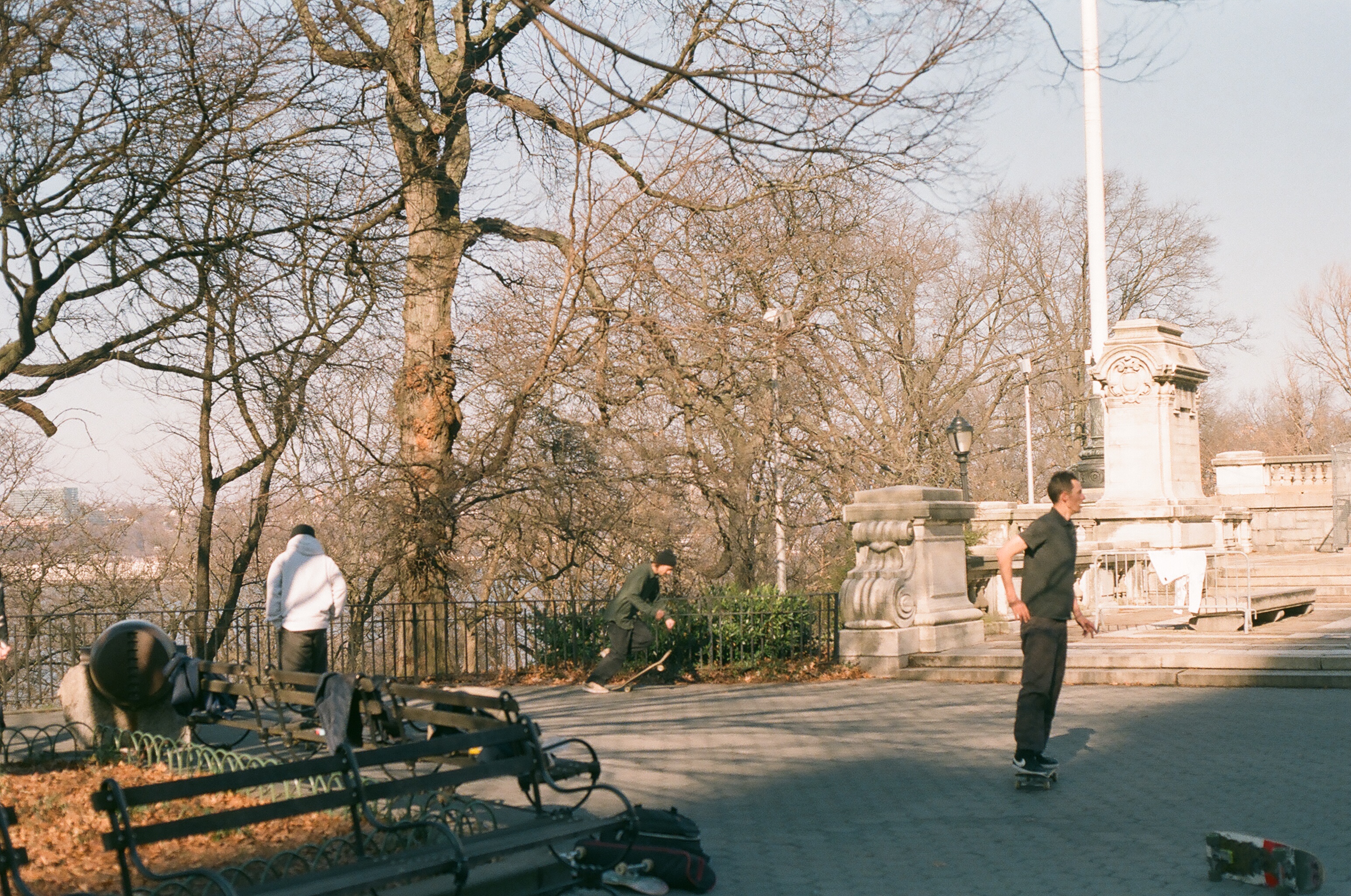
Soldiers and Sailors Monument
It’s so nice on the Upper West Side, like walking around in a Woody Allen movie. “That was the apartment from Hannah and her Sisters,” points out my guide Ted Barrow, the vicious Instagram skate critic, art scholar, and unofficial custodian of the Soldiers and Sailors spot. Before we begin skating, he disappears for a minute and returns with a broom to sweep away the leaves from the base of the curbs.
“It belongs to a homeless lady who lives here,” he explains. “She lets me use her broom if I give her a dollar.”
The first time I skated here, the closest I came to grinding the curved curb was tumbling repeatedly into the neighboring garden bed. Today, thanks to my McGolrick training regime, I manage a few frontsides. Ted, who violently and gracefully dominates these curbs, agrees they are kind of difficult.
“You need to surf into these, really slash into it. It’s more like grinding a pool,” he says.
The cylindrical Grecian-style monument that looks over the spot, built to ‘commemorate the valor of the soldiers and sailors who in the Civil War fought in defense of the union’, gives an impression of crumbling grandeur.
Marble slabs and cement from the domed ceiling started falling on people a few years after the monument opened in 1902. There have been several rounds of pricey renovations on the memorial and its surrounding plaza over the years, but the interior remains closed to the public and the whole structure has an abandoned construction site vibe.
A crew of well-spoken, well-dressed friends of Ted arrive during our session.
“Do you live around here?” asks Greg, who is filming for an upcoming video based around the spot. “No, I live in Brooklyn,” I apologise.
We could’ve moved here and our New York life may have been very different, I suppose. Less pierogis, more Zabar’s. Less street art, more majestic views of the Hudson river. Who am I kidding? We couldn’t afford the rent.
The rest of them
I’m holed up in our cramped apartment, hiding in our makeshift ‘office’ while my five-year-old son attends a Zoom meeting with his kindergarten class. The sun is shining ironically. I’m trying to think of something clever to say about curbs, and monuments, and skateboarding, and why any of this matters.
I want to acknowledge that there are a bunch of other monument spots around NYC – Fort Greene park, Columbus Circle, Washington Square Park, Union Square, Astor Place, the Chinatown manual pad… many of them can be found on Quartersnacks’ excellent spot database. I hope I get a chance to skate them one day in the future; I wish that didn’t seem like such a far-fetched idea at this point in time.



